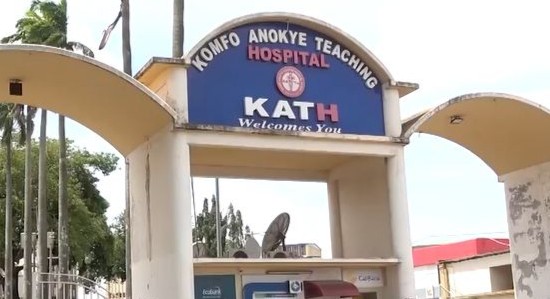Water crisis shut down health care in Ghana’s second-largest teaching hospital: lessons on urban infrastructure interdependencies
It is commonly acknowledged that “water is life.” This statement becomes even more compelling when we consider the critical role water supply plays in healthcare delivery within hospitals. These facilities rely heavily on a constant and reliable water flow to maintain hygiene, perform surgical procedures, and provide lifesaving care. This underscores a simple but profound truth: without water, even the most technologically advanced medical facilities are rendered powerless. In this context, “no water” truly means “no care.”

A recent crisis in Kumasi starkly illustrates this reality. Severe water shortages have paralysed the Komfo Anokye Teaching Hospital (KATH), the largest referral hospital serving the middle and northern belts of Ghana. Deprived of a reliable water supply, KATH has been forced to suspend all surgical procedures. Critically ill patients are being turned away, not because of a lack of medical expertise, but due to the hospital’s inability to maintain essential operations without water.
This situation exposes a troubling reality: our healthcare systems are more fragile than we often recognise. The crisis also raises urgent questions: If a water shortage can halt operations at one of Ghana’s premier hospitals, how many other communities, businesses, and institutions are at similar risk? Why is the Ghana Water Company Limited (GWCL) struggling to consistently supply such a vital facility? More importantly, how are healthcare providers coping with these disruptions, and what alternative systems exist to mitigate the impact on service delivery? As researchers, we must connect these dots and ask: What interventions can be implemented to reduce or mitigate the impact of water disruptions on healthcare delivery?
Critical infrastructure interdependencies and resilience
In today’s interconnected urban environments, infrastructure systems are tightly coupled. The failure of one system can trigger cascading effects across multiple sectors. The case of KATH highlights the essential nature of water infrastructure and its complex interdependencies with other urban systems, particularly healthcare.
KATH’s heavy reliance on GWCL’s water supply system has left critical healthcare services vulnerable, thereby endangering public health in troubling ways. These types of compound crises expose serious gaps in urban resilience and demonstrate the fragility of essential services—especially in African cities where infrastructure interruptions are a part of daily life.
This reality prompts several critical questions: To what extent do current infrastructure plans account for system failures and cascading crises? How can critical services, such as healthcare facilities, be better prepared to withstand infrastructure breakdowns? How do water crises impact various stakeholders—users, service providers, and businesses—and how do they adapt? Addressing these questions is crucial—not merely to satisfy academic curiosity but also for informing infrastructure planning, risk management policies, and the development of resilient urban systems.
Reflections and Policy Recommendations
The water crisis in Kumasi serves as a stark reminder of the urgent need to rethink urban infrastructure planning. We must not only pay greater attention to infrastructure failures but also to their interlocking and cascading impacts on other sectors.
While we may not be able to eliminate disruptions entirely, it is possible for city authorities to adopt integrated planning approaches that build more adaptive and resilient systems. Mainstreaming strategies that acknowledge infrastructural interdependence can significantly reduce the impact of cascading failures—not just in healthcare, but also in energy, sanitation, and other critical services. More specifically, it is recommended that:
- Hospital authorities should invest in backup systems and buffer mechanisms—such as integrated water systems and large-scale storage facilities—to endure regular supply interruptions.
- Water managers must transition from reactive to proactive strategies, prioritizing preventive maintenance and risk mitigation over crisis response.
- Urban planners should implement integrated, systems-based approaches that anticipate and account for interdependencies among infrastructure networks, to enhance preparedness and overall resilience.
As urbanization accelerates, cities in Ghana and across the Global South must embrace forward-looking infrastructure policies that anticipate and manage risk before it escalates into a crisis. The Kumasi case is not an isolated incident—it is a wake-up call. Failure to address chronic water crises today will inevitably result in more severe and catastrophic challenges tomorrow.
Research and text by MUWUG team members Lazarus Jambadu, Manuel J. Manu-Osafo, Musah Aziba Issah and Samuel Baidoo.
